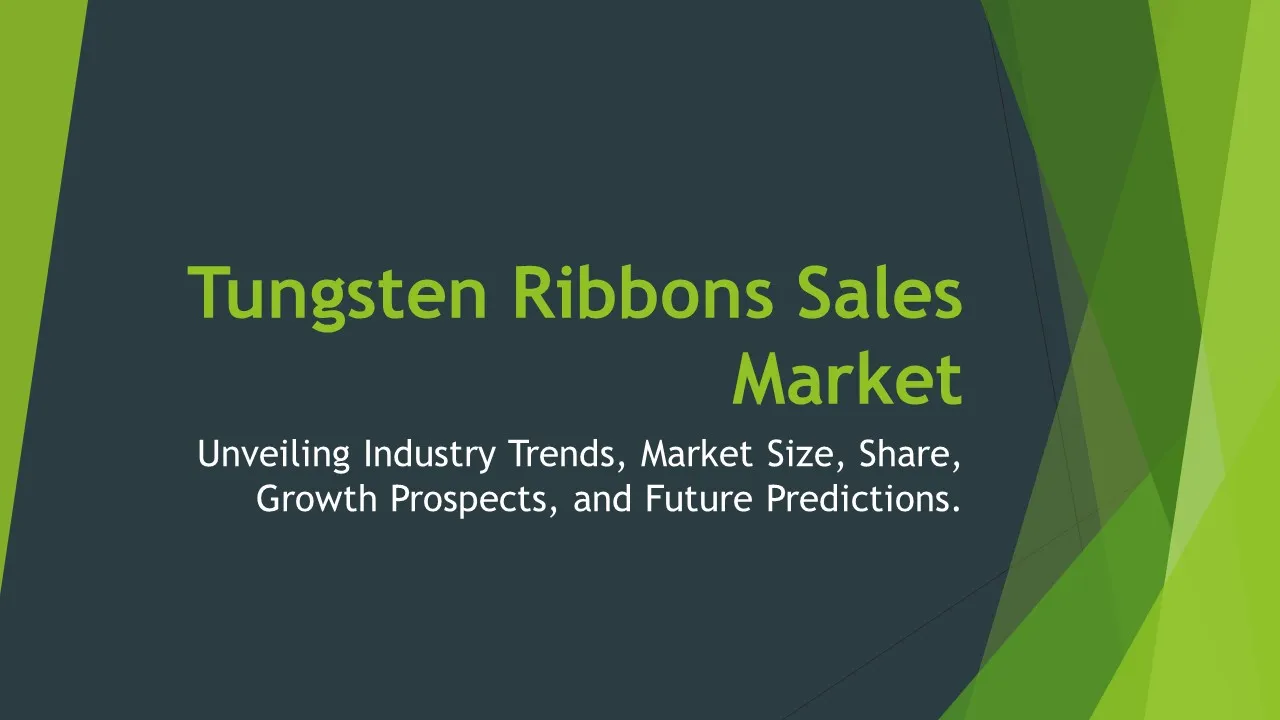Anti Corrosive Pigment Sales
Anti Corrosive Pigment Market Segments - by Product Type (Organic Zinc, Zinc Chromate, Polyphosphate, Epoxy, and Acrylic), Application (Coatings, Inks, Plastics, Construction, and Others), Distribution Channel (Direct Sales, Distributors, Online Retail, Retail Stores, and Others), Ingredient Type (Zinc, Aluminum, Strontium, Cerium, and Others), and Region (North America, Europe, Asia Pacific, Latin America, and Middle East & Africa) - Global Industry Analysis, Growth, Share, Size, Trends, and Forecast 2025-2035
- Report Preview
- Table Of Content
- Segments
- Methodology
Anti-Corrosive Pigment Sales Market Outlook
The global anti-corrosive pigment market is projected to reach USD 5.67 billion by 2035, growing at a compound annual growth rate (CAGR) of 6.8% from 2025 to 2035. The growth of this market is primarily attributed to the increasing demand for protective coatings across various industries, including automotive, marine, and construction. As infrastructure continues to expand and as urbanization accelerates, the necessity for anti-corrosive solutions becomes more pronounced. Moreover, stringent environmental regulations and the growing awareness regarding the detrimental effects of corrosion on assets further compel industries to invest in anti-corrosive pigments. Additionally, advancements in technology and the development of eco-friendly anti-corrosive coatings also play a pivotal role in driving market growth.
Growth Factor of the Market
The demand for anti-corrosive pigments is largely driven by the increasing focus on infrastructure development and maintenance, particularly in emerging economies where urbanization is rapidly progressing. Furthermore, the growing automotive industry, which requires high-performance coatings to mitigate corrosion, is contributing significantly to the market growth. The marine sector also plays an essential role as anti-corrosive pigments are vital for shipbuilding and maintenance. Additionally, the rise in global industrial activities necessitates protective coatings to prolong the lifespan of machinery and equipment. Environmental regulations mandating the use of sustainable materials in coatings are another crucial factor, compelling manufacturers to innovate and enhance anti-corrosive pigment formulations.
Key Highlights of the Market
- Projected market growth with a CAGR of 6.8% from 2025 to 2035.
- Increasing demand for anti-corrosive coatings in the automotive and marine industries.
- Rising infrastructure developments in emerging economies driving demand.
- Stringent environmental regulations promoting the use of sustainable materials.
- Technological advancements aiding in the formulation of high-performance pigments.
By Product Type
Organic Zinc:
Organic zinc compounds are a significant segment in the anti-corrosive pigment market due to their excellent corrosion-resistant properties. These pigments are known for their ability to form a protective layer that prevents moisture and oxygen from reaching the metal substrates. The demand for organic zinc is prevalent in industrial coatings, automotive paints, and marine applications, where durability and performance are paramount. Additionally, organic zinc pigments are often regarded as environmentally friendly alternatives to traditional inorganic zinc, contributing to their growing adoption among manufacturers looking to comply with stringent environmental regulations.
Zinc Chromate:
Zinc chromate has been a traditional choice for anti-corrosive applications due to its effectiveness in preventing rust and corrosion. This pigment exhibits excellent adhesion and durability, making it suitable for various applications, including aerospace, automotive, and industrial coatings. However, due to environmental concerns regarding chromium compounds, the use of zinc chromate is gradually declining. Nevertheless, it remains a vital component in some formulations, particularly where high-performance coatings are needed. The market for zinc chromate is expected to be challenged by the need for safer alternatives, prompting manufacturers to innovate and develop new formulations.
Polyphosphate:
Polyphosphate pigments serve as an effective anti-corrosive agent, offering enhanced protection against corrosion through their unique chemical properties. They are particularly valued in water-based coatings and are often utilized in industries such as construction and automotive. Polyphosphate formulations enable manufacturers to create coatings that not only resist corrosion but also provide additional benefits such as improved adhesion and flexibility. As the trend towards sustainable and eco-friendly products continues to grow, the demand for polyphosphate pigments is expected to rise, particularly in regions with stringent environmental regulations.
Epoxy:
Epoxy-based anti-corrosive pigments have gained traction due to their robust protective capabilities and excellent adhesion properties. These pigments are widely used in industrial coatings, including those applied to pipelines, tanks, and other structures exposed to harsh environments. The versatility of epoxy allows for the formulation of coatings that can withstand extreme temperatures and chemical exposures, making them ideal for industries such as oil and gas, marine, and manufacturing. With the increasing focus on infrastructure maintenance and the need for durable coatings, the epoxy segment is anticipated to witness significant growth in the coming years.
Acrylic:
Acrylic anti-corrosive pigments are known for their quick-drying properties and UV resistance, making them a popular choice for various applications. These pigments are commonly used in exterior coatings, automotive finishes, and protective topcoats due to their durability and aesthetic appeal. The demand for acrylic pigments is driven by the growing construction industry and the need for high-performance coatings that can withstand environmental degradation. Additionally, the trend towards water-based formulations, which are often favored for their environmental benefits, further supports the growth of the acrylic segment in the anti-corrosive pigment market.
By Application
Coatings:
The coatings segment dominates the anti-corrosive pigment market, driven by its extensive use across various industries. Protective coatings are essential for preventing rust and deterioration of metals, especially in sectors such as automotive, marine, and construction. The increasing need for durable and long-lasting finishes has led manufacturers to focus on developing high-performance anti-corrosive coatings containing advanced pigments. As infrastructure projects expand and maintenance activities increase, the demand for coatings that provide effective corrosion resistance is expected to rise significantly.
Inks:
In the inks segment, anti-corrosive pigments are crucial for ensuring the longevity and performance of printed materials. These pigments are utilized in various ink formulations, especially for packaging and industrial printing applications. The demand for anti-corrosive inks is driven by the need for durable prints that can withstand environmental stressors, including moisture and UV radiation. As the packaging industry continues to grow, the inclusion of anti-corrosive pigments in inks will become increasingly important to ensure product integrity and shelf life.
Plastics:
Anti-corrosive pigments are also increasingly being incorporated into plastic materials to enhance their protective properties. The plastics segment is gaining traction as industries look for lightweight, corrosion-resistant alternatives to traditional materials. This is particularly relevant in automotive and construction applications, where plastic components are often exposed to harsh environments. The growth of the plastics segment is fueled by ongoing innovations in material science, which allow for the development of advanced anti-corrosive formulations that meet the rising demand for durability and performance in various applications.
Construction:
In the construction sector, anti-corrosive pigments are essential for protecting structural components from rust and degradation. These pigments are utilized in a wide range of applications, including coatings for steel beams, rebar, and other construction materials. The growth of the construction industry, particularly in emerging economies, is driving the demand for effective anti-corrosive solutions. As urban development continues to increase, the need for reliable protective coatings that can withstand environmental factors is expected to boost the anti-corrosive pigment market significantly.
Others:
The "Others" category encompasses various applications of anti-corrosive pigments, including automotive, marine, and industrial equipment. Each of these applications requires unique formulations designed to withstand specific environmental conditions. The automotive industry, for example, demands high-performance pigments that can endure exposure to chemicals and UV light, while marine applications necessitate coatings that resist saltwater corrosion. As industries continue to innovate and expand, the demand for specialized anti-corrosive pigments across diverse applications is anticipated to grow steadily.
By Distribution Channel
Direct Sales:
Direct sales remain a preferred distribution channel for many manufacturers of anti-corrosive pigments. This approach allows companies to establish a direct relationship with their clients, enabling them to understand customer needs and tailor their offerings accordingly. Direct sales channels facilitate better communication and can lead to stronger partnerships, especially for large-scale projects that require customized solutions. Furthermore, manufacturers can leverage direct sales to provide technical support and advice, enhancing customer satisfaction and loyalty in the long term.
Distributors:
Utilizing distributors is a common strategy for manufacturers seeking to expand their market reach. Distributors often possess established networks and industry expertise that can significantly facilitate the introduction of anti-corrosive pigments to new markets. By partnering with distributors, manufacturers can benefit from their logistical capabilities, enabling efficient delivery and inventory management. This channel is particularly advantageous for companies aiming to penetrate various regional markets without the need for extensive infrastructure investments, allowing for more agile and responsive operations.
Online Retail:
The rise of e-commerce has transformed the distribution landscape for anti-corrosive pigments, with online retail becoming an increasingly significant channel. As consumers and businesses alike turn to online platforms for purchasing, manufacturers are adapting their sales strategies to include e-commerce solutions. This shift allows for greater market accessibility and convenience, enabling customers to compare products and make informed purchasing decisions quickly. The online retail segment is expected to grow as digital platforms continue to evolve and improve the customer experience in terms of product availability and information.
Retail Stores:
Retail stores serve as an important distribution channel for anti-corrosive pigments, particularly for small-scale purchases and consumer applications. Hardware stores and specialty shops often carry a range of anti-corrosive products, catering to DIY enthusiasts and contractors alike. The physical presence of retail stores offers customers the advantage of immediate product access and the ability to seek advice from knowledgeable staff. As the trend towards home improvement and maintenance gains momentum, the retail stores segment is likely to experience steady growth in the anti-corrosive pigment market.
Others:
The "Others" category in the distribution channel segment includes various alternative channels such as trade shows, exhibitions, and specialized trade organizations. These channels provide manufacturers with opportunities to showcase their products directly to potential clients and industry stakeholders. Participation in trade shows enables manufacturers to network, gather feedback, and promote their anti-corrosive pigment solutions effectively. Additionally, collaborations with industry associations can lead to increased visibility and credibility within the market, fostering growth opportunities for manufacturers.
By Ingredient Type
Zinc:
Zinc-based anti-corrosive pigments are widely recognized for their excellent protective properties against corrosion. They function primarily through galvanic action, where zinc corrodes instead of the substrate, thus providing a sacrificial layer of protection. This ingredient type is extensively used in industrial coatings, automotive paints, and galvanizing applications. The high demand for zinc pigments can be attributed to their effectiveness and the increasing regulatory push towards eco-friendly alternatives. As industries seek to enhance the durability and longevity of their products, the use of zinc-based pigments is expected to remain robust.
Aluminum:
Aluminum pigments are known for their reflective properties, which effectively reduce heat absorption and help in maintaining the integrity of surfaces. They are increasingly used in various applications, including coatings for automotive and industrial purposes. The lightweight nature of aluminum provides additional benefits, particularly in the automotive industry, where reducing overall weight is a significant focus. The growth of the aluminum segment is driven by the increasing need for energy-efficient and high-performance coatings that can withstand harsh environmental conditions.
Strontium:
Strontium-based compounds are gaining recognition in the anti-corrosive pigment market for their unique properties, which enhance the performance of coatings. These pigments can improve adhesion and durability while also providing additional benefits such as UV resistance. Strontium compounds are commonly utilized in automotive and industrial applications where superior performance is required. The growing emphasis on developing high-quality, long-lasting coatings drives the demand for strontium pigments, positioning them as an essential component in the anti-corrosive pigment landscape.
Cerium:
Cerium-based pigments are increasingly being explored for their anti-corrosive properties, particularly in environmentally friendly formulations. These pigments offer excellent performance in preventing corrosion while being compliant with stringent environmental regulations. They are often used in water-based coatings and are favored in applications where low toxicity and good environmental compatibility are essential. As industries continue to prioritize sustainability, the demand for cerium-based anti-corrosive pigments is projected to rise, particularly in sectors focused on eco-friendly practices.
Others:
The "Others" category encompasses various alternative ingredient types utilized in anti-corrosive formulations. This includes a range of proprietary blends and innovative materials designed to enhance performance and meet specific application needs. Manufacturers are increasingly experimenting with different formulations and ingredient combinations to achieve superior corrosion resistance while maintaining cost-effectiveness. As market demands evolve and industries seek customized solutions, the development of alternative ingredient types will play a crucial role in the growth and diversification of the anti-corrosive pigment market.
By Region
North America is expected to hold a significant share of the anti-corrosive pigment market due to its established industrial base and increasing infrastructure projects. The region's focus on modernizing aging infrastructure and the rising demand for protective coatings in automotive and aerospace sectors are key factors driving growth. In addition to this, the growing awareness about corrosion prevention and the implementation of stringent environmental regulations further boost market demand. The North American market is projected to grow at a CAGR of 6.5% from 2025 to 2035, highlighting its vital role in the global anti-corrosive pigment landscape.
Europe also presents substantial opportunities for the anti-corrosive pigment market, influenced by the region's commitment to sustainability and innovation. The European market is characterized by an increasing emphasis on eco-friendly coatings and protective solutions, driven by stringent regulations related to environmental impact. Countries such as Germany and the UK are at the forefront of adopting advanced anti-corrosive formulations to protect industrial assets and infrastructure. With a growing construction sector and increasing industrial activities, the European anti-corrosive pigment market is anticipated to witness steady growth in the coming years.
Opportunities
The anti-corrosive pigment market presents numerous opportunities for growth, particularly as industries increasingly prioritize the longevity and durability of their assets. The ongoing trend of infrastructure development, particularly in emerging economies, creates a fertile ground for manufacturers to introduce innovative anti-corrosive solutions. With governments investing heavily in infrastructure projects, there is a heightened demand for protective coatings across various sectors, including transportation, marine, and industrial applications. Additionally, the market is witnessing a growing preference for eco-friendly and sustainable coatings, prompting manufacturers to innovate and develop products that align with these demands. By capitalizing on these trends and focusing on sustainability, companies can position themselves favorably in the competitive landscape.
Moreover, technological advancements in manufacturing processes and formulation techniques present significant opportunities for market players. The development of advanced pigments that offer improved corrosion resistance, enhanced adhesion, and greater environmental compatibility is gaining traction. Companies that invest in research and development to create high-performance anti-corrosive pigments are likely to gain a competitive edge. The integration of smart technologies, such as nanotechnology and automation, into the production of anti-corrosive pigments can also lead to new applications and markets. By leveraging these innovations, industry players can expand their product offerings and tap into new customer segments, further fueling market growth.
Threats
Despite the positive outlook for the anti-corrosive pigment market, several threats could hinder its growth trajectory. One significant challenge is the increasing competition from low-cost substitutes, particularly from regions with lower production costs. As manufacturers strive to maintain profitability, the pressure to reduce prices may lead to compromises in product quality. Additionally, the rise of alternative corrosion protection technologies, such as coatings that utilize nanomaterials or self-healing properties, poses a threat to traditional anti-corrosive pigments. As these new technologies gain traction, they may capture market share and diminish the demand for conventional pigments.
Another potential threat arises from the evolving regulatory landscape surrounding environmental and health concerns related to traditional anti-corrosive pigments, particularly those containing heavy metals. Stricter regulations could limit the use of certain ingredients, necessitating significant reforms in formulation practices. Companies may be required to invest heavily in research and development to comply with new regulations, which can strain resources and impact profitability. Additionally, fluctuations in raw material prices and supply chain disruptions can pose challenges to production and cost management. As a result, companies must remain agile and adaptable to navigate these threats effectively.
Competitor Outlook
- BASF SE
- PPG Industries Inc.
- AkzoNobel N.V.
- Hempel A/S
- Sherwin-Williams Company
- RPM International Inc.
- Noroo Paint & Coatings
- Ferro Corporation
- Arkema S.A.
- Kansai Paint Co., Ltd.
- Zinc Nacional, S.A.B. de C.V.
- Jotun Group
- Eastman Chemical Company
- Valspar Corporation
- Ferro Corporation
The competitive landscape of the anti-corrosive pigment market is characterized by a mix of established multinational corporations and emerging players striving to capture market share. Leading companies such as BASF SE, PPG Industries, and AkzoNobel are continuously innovating and expanding their product portfolios to meet the evolving demands of various industries. These companies often invest heavily in research and development to create high-performance anti-corrosive formulations that comply with stringent environmental regulations. As a result, they maintain a strong market presence and capitalize on growing opportunities across different regions.
In addition to product innovation, strategic collaborations and acquisitions are common tactics employed by major players to enhance their market positions. For example, Sherwin-Williams and RPM International have made significant acquisitions to expand their product offerings and geographic reach, allowing them to cater to a broader customer base. Furthermore, companies are increasingly focusing on sustainability initiatives, such as the development of eco-friendly anti-corrosive pigments, to align with global trends towards environmentally responsible practices. This commitment to sustainability not only helps enhance brand reputation but also meets the growing consumer demand for greener products.
Emerging players, including regional manufacturers, are also gaining traction in the market by offering cost-effective solutions tailored to specific local needs. These companies often capitalize on their agility and ability to respond quickly to market trends, allowing them to compete effectively against larger corporations. With advancements in technology and formulation techniques, smaller players are increasingly able to produce high-quality anti-corrosive pigments that meet industry standards. As competition intensifies, the market is expected to witness ongoing innovations and improvements, ultimately benefiting consumers with a diverse range of high-performance options.
1 Appendix
- 1.1 List of Tables
- 1.2 List of Figures
2 Introduction
- 2.1 Market Definition
- 2.2 Scope of the Report
- 2.3 Study Assumptions
- 2.4 Base Currency & Forecast Periods
3 Market Dynamics
- 3.1 Market Growth Factors
- 3.2 Economic & Global Events
- 3.3 Innovation Trends
- 3.4 Supply Chain Analysis
4 Consumer Behavior
- 4.1 Market Trends
- 4.2 Pricing Analysis
- 4.3 Buyer Insights
5 Key Player Profiles
- 5.1 BASF SE
- 5.1.1 Business Overview
- 5.1.2 Products & Services
- 5.1.3 Financials
- 5.1.4 Recent Developments
- 5.1.5 SWOT Analysis
- 5.2 Hempel A/S
- 5.2.1 Business Overview
- 5.2.2 Products & Services
- 5.2.3 Financials
- 5.2.4 Recent Developments
- 5.2.5 SWOT Analysis
- 5.3 Arkema S.A.
- 5.3.1 Business Overview
- 5.3.2 Products & Services
- 5.3.3 Financials
- 5.3.4 Recent Developments
- 5.3.5 SWOT Analysis
- 5.4 Jotun Group
- 5.4.1 Business Overview
- 5.4.2 Products & Services
- 5.4.3 Financials
- 5.4.4 Recent Developments
- 5.4.5 SWOT Analysis
- 5.5 AkzoNobel N.V.
- 5.5.1 Business Overview
- 5.5.2 Products & Services
- 5.5.3 Financials
- 5.5.4 Recent Developments
- 5.5.5 SWOT Analysis
- 5.6 Ferro Corporation
- 5.6.1 Business Overview
- 5.6.2 Products & Services
- 5.6.3 Financials
- 5.6.4 Recent Developments
- 5.6.5 SWOT Analysis
- 5.7 PPG Industries Inc.
- 5.7.1 Business Overview
- 5.7.2 Products & Services
- 5.7.3 Financials
- 5.7.4 Recent Developments
- 5.7.5 SWOT Analysis
- 5.8 Valspar Corporation
- 5.8.1 Business Overview
- 5.8.2 Products & Services
- 5.8.3 Financials
- 5.8.4 Recent Developments
- 5.8.5 SWOT Analysis
- 5.9 Kansai Paint Co., Ltd.
- 5.9.1 Business Overview
- 5.9.2 Products & Services
- 5.9.3 Financials
- 5.9.4 Recent Developments
- 5.9.5 SWOT Analysis
- 5.10 Noroo Paint & Coatings
- 5.10.1 Business Overview
- 5.10.2 Products & Services
- 5.10.3 Financials
- 5.10.4 Recent Developments
- 5.10.5 SWOT Analysis
- 5.11 RPM International Inc.
- 5.11.1 Business Overview
- 5.11.2 Products & Services
- 5.11.3 Financials
- 5.11.4 Recent Developments
- 5.11.5 SWOT Analysis
- 5.12 Eastman Chemical Company
- 5.12.1 Business Overview
- 5.12.2 Products & Services
- 5.12.3 Financials
- 5.12.4 Recent Developments
- 5.12.5 SWOT Analysis
- 5.13 Sherwin-Williams Company
- 5.13.1 Business Overview
- 5.13.2 Products & Services
- 5.13.3 Financials
- 5.13.4 Recent Developments
- 5.13.5 SWOT Analysis
- 5.14 Zinc Nacional, S.A.B. de C.V.
- 5.14.1 Business Overview
- 5.14.2 Products & Services
- 5.14.3 Financials
- 5.14.4 Recent Developments
- 5.14.5 SWOT Analysis
- 5.1 BASF SE
6 Market Segmentation
- 6.1 Anti Corrosive Pigment Sales Market, By Application
- 6.1.1 Coatings
- 6.1.2 Inks
- 6.1.3 Plastics
- 6.1.4 Construction
- 6.1.5 Others
- 6.2 Anti Corrosive Pigment Sales Market, By Product Type
- 6.2.1 Organic Zinc
- 6.2.2 Zinc Chromate
- 6.2.3 Polyphosphate
- 6.2.4 Epoxy
- 6.2.5 Acrylic
- 6.3 Anti Corrosive Pigment Sales Market, By Ingredient Type
- 6.3.1 Zinc
- 6.3.2 Aluminum
- 6.3.3 Strontium
- 6.3.4 Cerium
- 6.3.5 Others
- 6.4 Anti Corrosive Pigment Sales Market, By Distribution Channel
- 6.4.1 Direct Sales
- 6.4.2 Distributors
- 6.4.3 Online Retail
- 6.4.4 Retail Stores
- 6.4.5 Others
- 6.1 Anti Corrosive Pigment Sales Market, By Application
7 Competitive Analysis
- 7.1 Key Player Comparison
- 7.2 Market Share Analysis
- 7.3 Investment Trends
- 7.4 SWOT Analysis
8 Research Methodology
- 8.1 Analysis Design
- 8.2 Research Phases
- 8.3 Study Timeline
9 Future Market Outlook
- 9.1 Growth Forecast
- 9.2 Market Evolution
10 Geographical Overview
- 10.1 Europe - Market Analysis
- 10.1.1 By Country
- 10.1.1.1 UK
- 10.1.1.2 France
- 10.1.1.3 Germany
- 10.1.1.4 Spain
- 10.1.1.5 Italy
- 10.1.1 By Country
- 10.2 Asia Pacific - Market Analysis
- 10.2.1 By Country
- 10.2.1.1 India
- 10.2.1.2 China
- 10.2.1.3 Japan
- 10.2.1.4 South Korea
- 10.2.1 By Country
- 10.3 Latin America - Market Analysis
- 10.3.1 By Country
- 10.3.1.1 Brazil
- 10.3.1.2 Argentina
- 10.3.1.3 Mexico
- 10.3.1 By Country
- 10.4 North America - Market Analysis
- 10.4.1 By Country
- 10.4.1.1 USA
- 10.4.1.2 Canada
- 10.4.1 By Country
- 10.5 Middle East & Africa - Market Analysis
- 10.5.1 By Country
- 10.5.1.1 Middle East
- 10.5.1.2 Africa
- 10.5.1 By Country
- 10.6 Anti Corrosive Pigment Sales Market by Region
- 10.1 Europe - Market Analysis
11 Global Economic Factors
- 11.1 Inflation Impact
- 11.2 Trade Policies
12 Technology & Innovation
- 12.1 Emerging Technologies
- 12.2 AI & Digital Trends
- 12.3 Patent Research
13 Investment & Market Growth
- 13.1 Funding Trends
- 13.2 Future Market Projections
14 Market Overview & Key Insights
- 14.1 Executive Summary
- 14.2 Key Trends
- 14.3 Market Challenges
- 14.4 Regulatory Landscape
Segments Analyzed in the Report
The global Anti Corrosive Pigment Sales market is categorized based on
By Product Type
- Organic Zinc
- Zinc Chromate
- Polyphosphate
- Epoxy
- Acrylic
By Application
- Coatings
- Inks
- Plastics
- Construction
- Others
By Distribution Channel
- Direct Sales
- Distributors
- Online Retail
- Retail Stores
- Others
By Ingredient Type
- Zinc
- Aluminum
- Strontium
- Cerium
- Others
By Region
- North America
- Europe
- Asia Pacific
- Latin America
- Middle East & Africa
Key Players
- BASF SE
- PPG Industries Inc.
- AkzoNobel N.V.
- Hempel A/S
- Sherwin-Williams Company
- RPM International Inc.
- Noroo Paint & Coatings
- Ferro Corporation
- Arkema S.A.
- Kansai Paint Co., Ltd.
- Zinc Nacional, S.A.B. de C.V.
- Jotun Group
- Eastman Chemical Company
- Valspar Corporation
- Ferro Corporation
- Publish Date : Jan 20 ,2025
- Report ID : CH-19027
- No. Of Pages : 100
- Format : |
- Ratings : 4.5 (110 Reviews)









